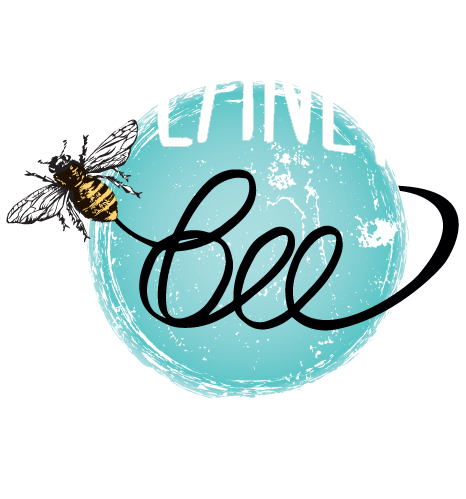Colonies and nests created by bees are fascinating examples of reusing materials that surround a habitat. The bee family Megachilidae is known as the architect of the bee world, creating long chambers for their little baby bees to hatch in. Not all bees live in giant colonies, like honey bees, in fact most bees are solitary; each family of bees creating individual nests depending on their needs.
Today we are specifically talking about the Leafcutting Bee, scientifically known as Megachile Latreille. Their nickname explains exactly what they do: they cut leaves! The female leafcutting bee is responsible for building a “nursery” for her little larvae. She finds a suitable space in preexisting tubular cavities (basically: holes). These cavities could be in hollow stems, rotting wood, empty tunnels left by beetles, snail shells, and even man-made holes in buildings! This is a totally tubular example of reusing material; humans could learn a thing or two from these bees. Once the female bee finds a cavity that is long and wide enough, she begins to carefully line the hole with leaves and petals to create a nice and comfortable brood chamber (this is the nursery). When she finishes one chamber she will lay her egg and provide pollen for the larva to eat. Each chamber is home to one egg which means the female leafcutting bee is constantly adding chambers until the hole is filled. Each chamber is separated by a wall made up of chewed leaves and mixed with resin. When the baby bees mature they are thankful for the home their mother has created and they stay the winter in their cozy chambers. When the spring arrives the adult bees chew their way through the chambers and exit the nest.

How do you identify these bees? Leafcutters are similar in size to honeybees. The females are larger than the males and have a triangular-shaped abdomen that ends in a point. The males can be identified by their smaller, blunt pointed abdomens and their long antennae. The leafcutter has a larger head than most bees due to the extra muscles they have developed to help them chew through leaves. The females even have teeth! An interesting difference between leafcutters and honeybees is that leafcutters carry pollen on the underside of their abdomen rather than on their legs like honeybees. This creates bright yellow/gold-colored bee butts that are easy to spot.
Why are leafcutters important? These bees are one of the best pollinators! So good that commercial agriculture will specifically use different species of Megachile to help pollinate their crops. Since leafcutters do not use leaves as a source of food, the holes they cut out of leaves are not damaging to crops. Their habit of carrying pollen on their abdomens means the pollen falls off easily and pollinates plants as they travel back and forth between their nest and plants.

These bees are easily brought into backyard gardens and their gentle nature (due to their non-defensive behavior) creates an easy coexistence between gardeners and pollinators. To encourage leafcutting bees in your backyard create a Bee Hotel! These are easy to build with many designs found online.
Next time you’re outside keep a lookout for holes that might be housing baby bees!
Sources
“Common Bee Groups of California.” UC Berkeley Urban Bee Lab. http://www.helpabee.org/common-bee-groups-of-ca.html
“Featured Creatures.” University of Florida. http://entnemdept.ufl.edu/creatures/misc/bees/leafcutting_bees.htm
Frankie, Gordon W., Thorp, Robbin W., Coville, Rollin E., Ertter, Barbara. "California Bees & Blooms: A Guide for Gardeners and Naturalists". Berkeley: Heyday, 2014. Pp. 112-125.
“Leafcutter Bee: Genial, Efficient, Tireless.” Honeybee Conservancy. https://thehoneybeeconservancy.org/leafcutter-bee/
“Life in a Hive.” Canada Agriculture and Food Museum. https://bees.techno-science.ca/english/bees/life-in-a-hive/brood-chamber.php
**************
Written by Myah Rivera
Environmental Studies Intern

